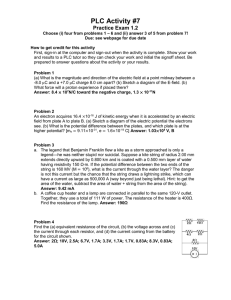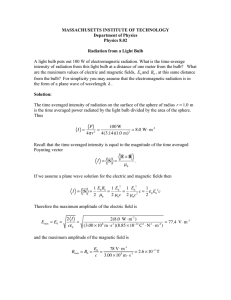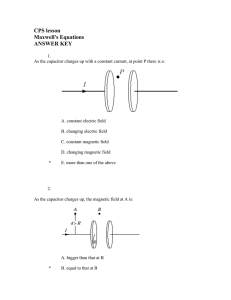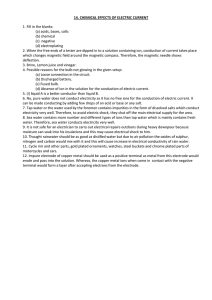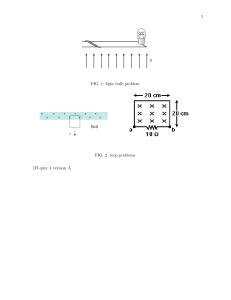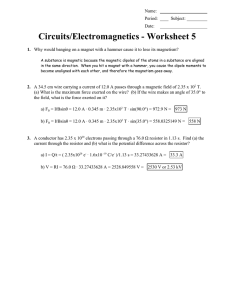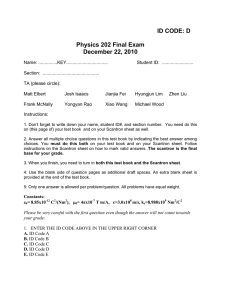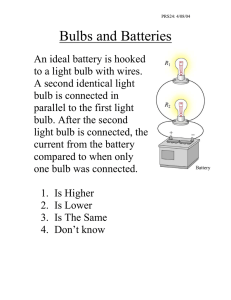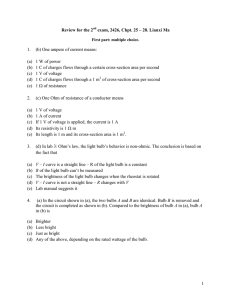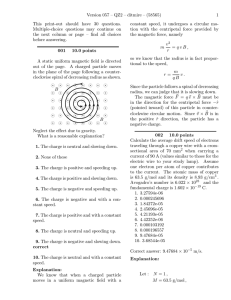1 Quiz 2 solutions are in order of the questions for... (1). Correct answer is E
advertisement
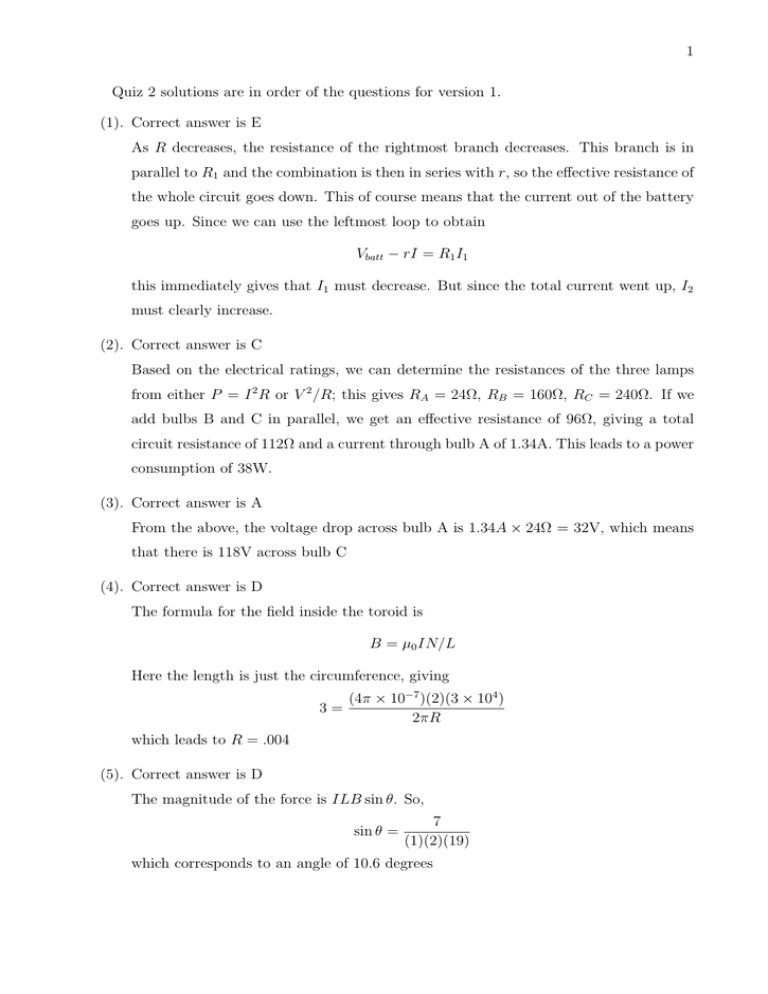
1 Quiz 2 solutions are in order of the questions for version 1. (1). Correct answer is E As R decreases, the resistance of the rightmost branch decreases. This branch is in parallel to R1 and the combination is then in series with r, so the effective resistance of the whole circuit goes down. This of course means that the current out of the battery goes up. Since we can use the leftmost loop to obtain Vbatt − rI = R1 I1 this immediately gives that I1 must decrease. But since the total current went up, I2 must clearly increase. (2). Correct answer is C Based on the electrical ratings, we can determine the resistances of the three lamps from either P = I 2 R or V 2 /R; this gives RA = 24Ω, RB = 160Ω, RC = 240Ω. If we add bulbs B and C in parallel, we get an effective resistance of 96Ω, giving a total circuit resistance of 112Ω and a current through bulb A of 1.34A. This leads to a power consumption of 38W. (3). Correct answer is A From the above, the voltage drop across bulb A is 1.34A × 24Ω = 32V, which means that there is 118V across bulb C (4). Correct answer is D The formula for the field inside the toroid is B = µ0 IN/L Here the length is just the circumference, giving 3= (4π × 10−7 )(2)(3 × 104 ) 2πR which leads to R = .004 (5). Correct answer is D The magnitude of the force is ILB sin θ. So, sin θ = 7 (1)(2)(19) which corresponds to an angle of 10.6 degrees 2 (6). Correct Answer is D The electric force must balance the magnetic force which is in the +y direction; so qE = qvB , giving E = vB = 1.6 × 104 in the −ĵ direction. (7). Correct answer is D From the leftmost loop, we have from Kirchoff’s laws that this current is just 7/10 (8). Correct answer is B The magnetic field amplitude is µ0 I = 3 × 10−4 T 2πd . So, we find d= (2 × 10−7 )(3) = .002 3 × 10−4 (9). Correct answer is A The voltage decays as CQ0 e−t/RC Hence it reaches half its initial value at t = RC ln (2) Plugging in gives answer A. (10). Correct answer is B Since the force is perpendicular to the velocity, the work done by the magnetic field which is proportional to the component of the force along the direction of motion, is always zero. Correct answer is A
